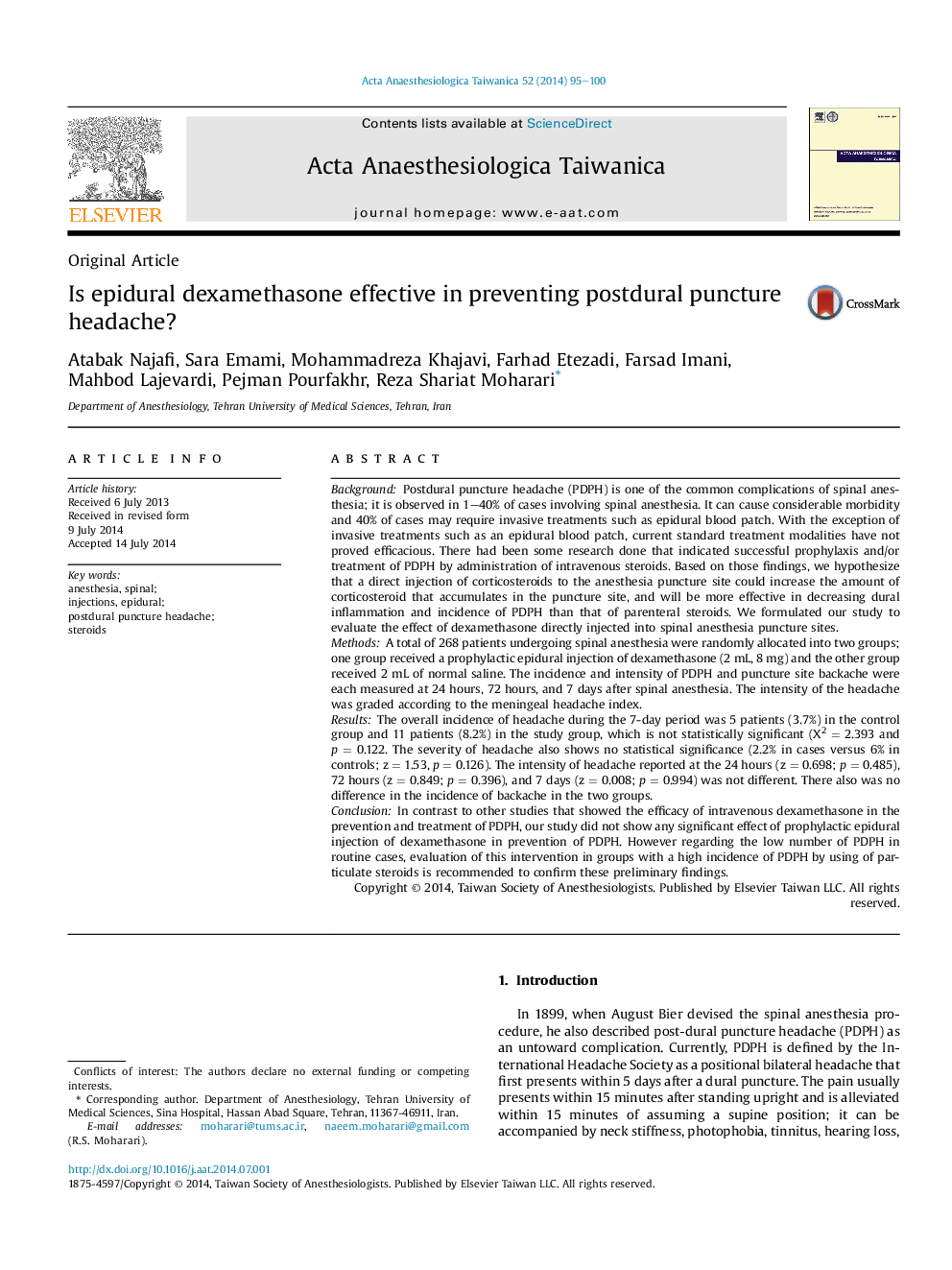| Article ID | Journal | Published Year | Pages | File Type |
|---|---|---|---|---|
| 2741462 | Acta Anaesthesiologica Taiwanica | 2014 | 6 Pages |
BackgroundPostdural puncture headache (PDPH) is one of the common complications of spinal anesthesia; it is observed in 1–40% of cases involving spinal anesthesia. It can cause considerable morbidity and 40% of cases may require invasive treatments such as epidural blood patch. With the exception of invasive treatments such as an epidural blood patch, current standard treatment modalities have not proved efficacious. There had been some research done that indicated successful prophylaxis and/or treatment of PDPH by administration of intravenous steroids. Based on those findings, we hypothesize that a direct injection of corticosteroids to the anesthesia puncture site could increase the amount of corticosteroid that accumulates in the puncture site, and will be more effective in decreasing dural inflammation and incidence of PDPH than that of parenteral steroids. We formulated our study to evaluate the effect of dexamethasone directly injected into spinal anesthesia puncture sites.MethodsA total of 268 patients undergoing spinal anesthesia were randomly allocated into two groups; one group received a prophylactic epidural injection of dexamethasone (2 mL, 8 mg) and the other group received 2 mL of normal saline. The incidence and intensity of PDPH and puncture site backache were each measured at 24 hours, 72 hours, and 7 days after spinal anesthesia. The intensity of the headache was graded according to the meningeal headache index.ResultsThe overall incidence of headache during the 7-day period was 5 patients (3.7%) in the control group and 11 patients (8.2%) in the study group, which is not statistically significant (X2 = 2.393 and p = 0.122. The severity of headache also shows no statistical significance (2.2% in cases versus 6% in controls; z = 1.53, p = 0.126). The intensity of headache reported at the 24 hours (z = 0.698; p = 0.485), 72 hours (z = 0.849; p = 0.396), and 7 days (z = 0.008; p = 0.994) was not different. There also was no difference in the incidence of backache in the two groups.ConclusionIn contrast to other studies that showed the efficacy of intravenous dexamethasone in the prevention and treatment of PDPH, our study did not show any significant effect of prophylactic epidural injection of dexamethasone in prevention of PDPH. However regarding the low number of PDPH in routine cases, evaluation of this intervention in groups with a high incidence of PDPH by using of particulate steroids is recommended to confirm these preliminary findings.
